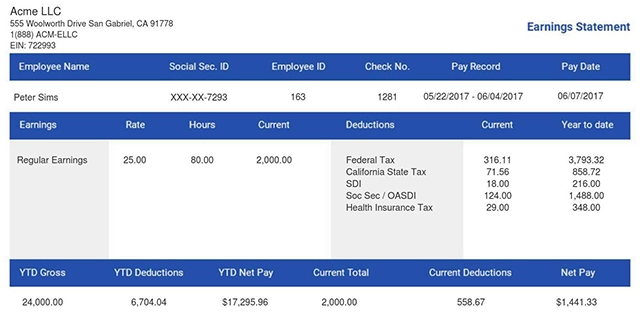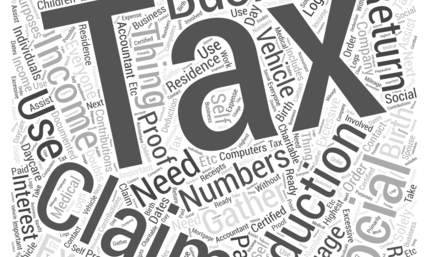What To Know About W2 vs Paystub
You may often notice that your W-2 and pay stub don’t always match. These are essentially two terms that most employees are usually confused about. However, it is important that one understands the differences between W2 vs paystub and how they relate to each other. This helps you to operate and navigate personal finances and all tax filings properly.
What Is a W-2 Form?
A W-2 form is a wage and tax statement. It summarizes all earnings and taxes withheld for the previous year. The W-2 is a necessary form your employer sends to the IRS to file an income tax return. It verifies all your tax reporting.
On the other hand, a pay stub is a document that shows all your earnings and deductions for a pay period. It shows your gross and net pay plus your year-to-date total earnings.
Understanding Paystub vs W2
In discussing W2 vs paystub, a simple way to explain the difference between them is that paystub shows gross income. The W-2 form contains all of the taxable income. Your pay stub shows the total gross wages earned before deductions and taxes. It also shows the employees’ net pay, or the amount received, while your W-2 form shows your taxable wages. W-2 reflects your earnings after pre-tax deductions. These deductions include health, dental, and life insurance plans. It also covers disability and 401(k) contributions.
Also, another difference related to W2 vs paystub is that your last paystub always seems to be bigger than your W-2. This is because pay stubs always include non-taxable income. This includes allowances, mileage reimbursements, and other non-taxable expenses you may have incurred.
Boxes on W-2
When viewing your W-2, 20 boxes are usually contained in the form. Each of these boxes includes the different types of wages that have been paid to you during the year. They include:
Box 1: Total Wages and Other Compensation
This box includes your taxable wages for federal income tax purposes, including your salary, tips, bonuses, and other taxable compensation.
Box 2: Federal Income Tax Withheld
Box 2 consists of the federal income tax withheld from your paychecks.
Box 3: Social Security Wages
Social Security wages for the year are shown in Box 3.
Box 4: Social Security Tax Withheld
Here, we have your Social Security tax withheld from your wages. In this box, your wage income should, at most, have the maximum amount of $9,114. It contains 6.2 per cent of the $147,000 or less wages received. You may have two or more jobs. In this case, your Social Security wages for all of those jobs combined are above the limit in one year. This means that too much taxes for Social Security may be withheld. You can, however, get an extra amount as a refundable credit on your Form 1040.
Box 5: Medicare Wages and Tips
This box reflects your wages that are subject to Medicare tax.
Box 6: Medicare Tax Withheld
This box includes the amount of Medicare taxes withheld from your paycheck.
Box 7: Social Security Tips
This is the total tips you reported that are subject to Social Security tax.
Box 8: Allocated Tips
Note that in boxes 1, 3, 5, or 7, this amount is not included.
Box 10: Dependent Care Benefits
Box 10 records any dependent care benefits provided by your employer. This is if you’re under a dependent care assistance program or the Section 125 cafeteria plan. It includes direct payments made to daycare facilities or reimbursements to you.
Box 11 Nonqualified plans
It shows any amount that was made to you from a deferred compensation plan (non-qualified).
Box 12: Compensation and Other Benefits
Box 12 reports other compensations and benefits, and each of these has an assigned code. Of course, there is a corresponding amount for each code. You will see a complete list of these in your W-2 instructions.
Box 13: Checkbox Information
Box 13 contains three checkboxes; however, only the "Retirement Plan" check box usually applies to University employees. If this box is checked, you had contributions to or were considered to have contributed to your employer's retirement plan. Special limits may apply to the deductibility of your traditional IRA contributions.
Box 14: Other Tax Information
This box can contain any other tax information your employer wishes to provide. For instance, "SUT" stands for State Unemployment Tax withheld from your earnings during the year.
Box 15: State and Employer's Tax Identification
It includes the state you worked in and your employer's state tax identification number.
Box 16: State Wages
The state income tax you received in box 16 is derived from the wages you have reported in the state recorded in box 15. If you receive wages subject to different state withholdings, you will get more than one W-2 form.
Box 17: State Income Tax Withheld
This is the amount of state withholding in total.
Box 18: Local Wages
This shows total wages subject to local income taxes. If you have worked in different locals, you will obtain more than one local W-2.
Box 19: Local Income Tax Withheld
Box 19 includes the total of local income tax withheld from the employee's pay.
Box 20: Locality Name
This contains the name of the locality where the tax is paid.
Year-End PayStub vs W2
When discussing year-end paystub vs W2, you must know about payroll and taxes. Year-end pay stubs and W-2s discuss different information, usually used for different reasons. For example, let’s take a look at company-sponsored retirement plans, such as 401(k). In this case, you only lower your federal and state taxable wages. You will see these reduced wages in Boxes 1 and 16 of the W-2 form. So, if you made contributions to a retirement plan, you will find out that your compensation is different. This information on your year-end pay stub differs from that on your W-2.
For example, if your salary is $50,000 and you contribute $5,000 to your 401(k). Your paystub may reflect that you earn $50,000. On the other hand, your W-2 will reflect the 401(k) deduction by showing $45,000 in Box 1 for federal wages. This is just like Box 16, which shows $45,000 for state wages.
Last Paystub vs W2: Can You File Your Taxes With Your Last Paystub?
Your final pay stub may not show your total earnings for the year. It might also lack some tax info needed for your tax return. If you file a return with incorrect info, you may need to amend it. This could raise your tax prep fees. Therefore, you cannot file your taxes with your last pay stub. However, you can use the official W-2 for all your tax filings, as recommended by the IRS.
Final Thought
It is very important to identify how different a pay stub is from a W-2 form. While one contains an employee's gross wages, the other includes their taxable wages reported for the year. When employers and employees understand w2 vs paystub, it ensures accurate filings at the end of the year or pay period.
The good news is that we have a simplified and streamlined payroll process designed for you. Our paystub creator is here to help you, as we are dedicated to allowing you to have easy access to track your finances. With us, you can also obtain all your tax information throughout the year. Our paystub and W-2 generator are simple and advanced tools you could use. You can automatically create your forms with accurate calculations, employee information, and wage details. Get started with us today!














